
Niseko, Toya-Usu and Shiraoi are three Hokkaido destinations for travellers who want to feel close to the communities they’re visiting.
Thanks to the commitment of a number of institutions, the marine area surrounding the Aegadian islands isn’t protected only on paper. Fish, cetaceans and turtles populate its waters and rare monk seals inhabit its caves.
With its 53,992 hectares, the protected marine area of Aegadian islands is the largest in Europe. An Italian paradise with mountainous and sea beautiful landscapes that adopted concrete sustainable measures to tackle the practices that threaten it. First of all, trawling.
Actually, the waters of the reserve are home to a real “forest” (but it is more correct to call it meadow) of Posidonia oceanica, an underwater green lung of about 7,700 hectares that provides feed and shelter to a number of species. Besides nurturing and repopulating the sea, the Posidonia tackles coastal erosion and it fights climate change and global warming, producing 2.5 times more oxygen than an equivalent portion of the Amazon forest and absorbing large amounts of CO2.
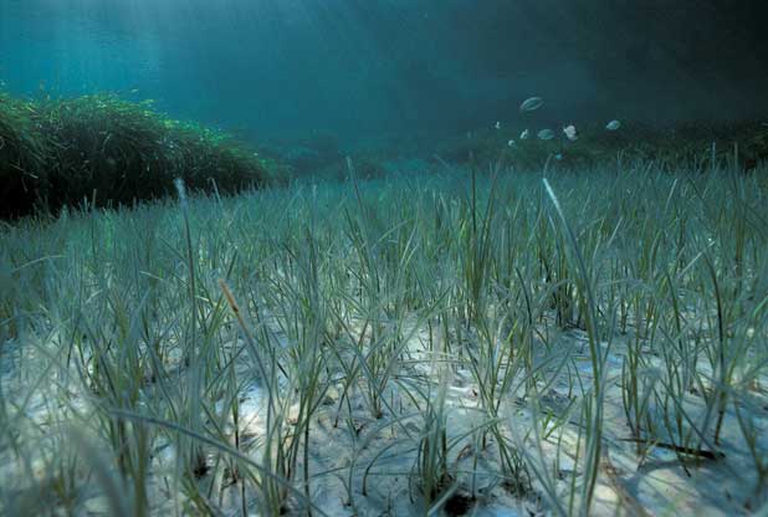
“In the Aegadian islands the Posidonia oceanica breaks all records: it has two metre long leaves and it grows deeper under the sea level. We are talking about a plant that needs sunlight in order to perform photosynthesis, but it thrives under a head of water of at least 52 metres. This is possible thanks to the exceptional cleanliness of the sea in this area”, said Stefano Donati, director of the marine protected area.
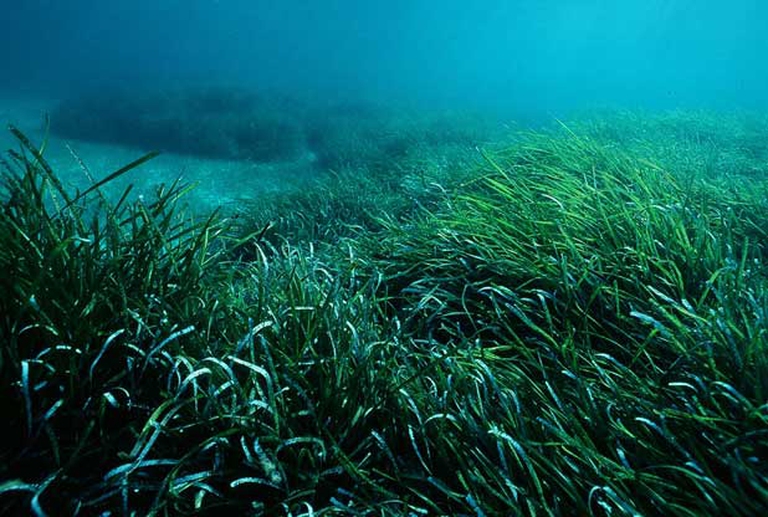
Trawling the coast is forbidden in the marine area, yet it is practiced illegally (1,200 times a year, according to estimates). By dragging the nets, several damages are caused to the seabed, including the eradication of the Posidonia oceanica, and the extermination of fish stocks. To combat illegal fishing, Donati chose to place a large amount of anti-trawling bollards and sea-friendly concrete blocks, with the same pH of the water, on the seabed, where marine organisms can easily take root and in a few months they will be able to blend perfectly with the marine ecosystem.
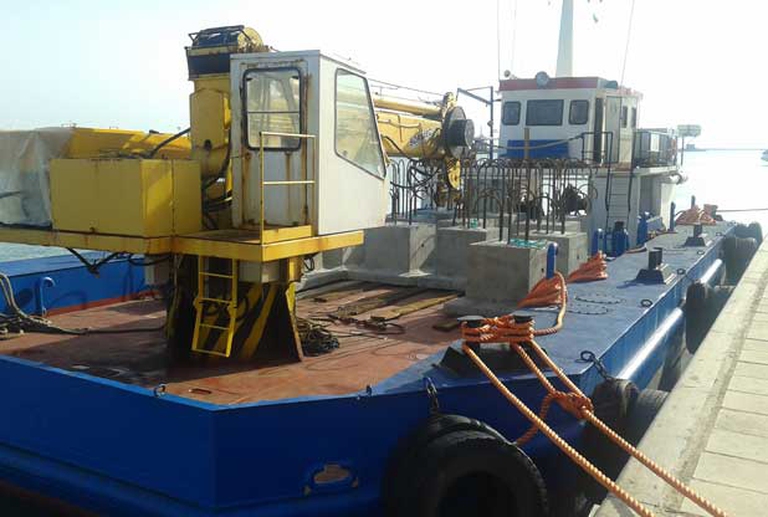
In the concrete blocks there are big hooks of a specific type of flexible steel that hook up the trawls (i.e. the net), thus preventing it from working. The fishing boat, however, is easily unfastened from these hooks without running the risk of sinking. Considering that each trawl costs approximately 15,000 euros, and once over the bollard it is unusable, it is easy to foresee the success of this operation. Actually, it has been already confirmed by the ENEA that monitored the Port Captaincy and the Marine Protected Area during the installation in 2012 of 72 bollards, financially supported by the Ministry of Environment, thanks to which illegal trawling dropped blatantly.
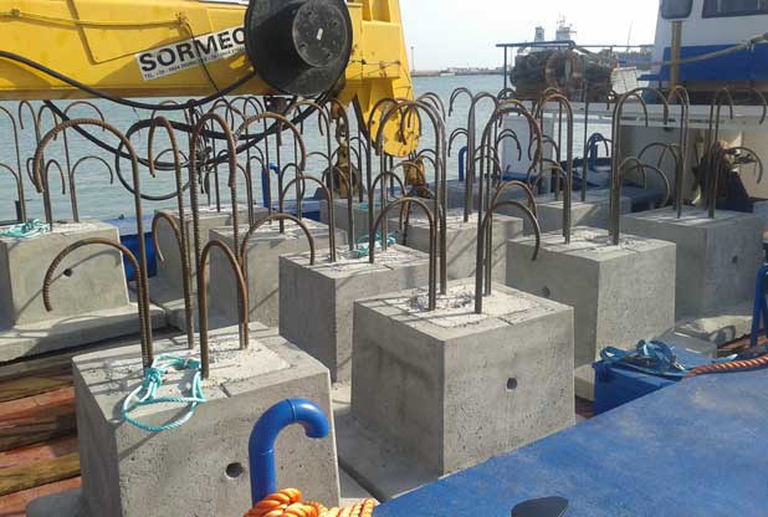
“The results of the first phase of the project were extraordinary. We monitored the satellite tracks of the trawlers in the first 18 months of the operation and then in the next months; when the first bollards were placed around Favignana we recorded a 50 percent decrease of infringements”, said Donati.
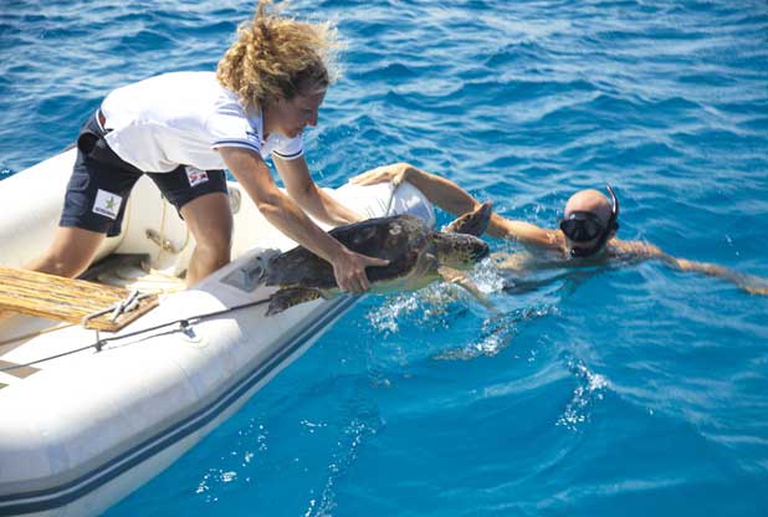
However, to completely prevent illegal trawling, another 80 bollards should be installed by 2017: at the moment the first 40 bollards are being positioned thanks to the support of Rio Mare, a leading manufacturer of canned tuna that committed itself to source 100 percent of its tuna from sustainable fisheries by 2017. The company will support and finance for three years the council of Favignana and the marine protected area of the Aegadian islands, not only for the installation of bollards, but also for the creation of a brand new veterinary centre for Favignana sea turtles and an observatory for monk seals in the picturesque Castle of Punta Troia in Marettimo, from which it is possible to see wonderful marine creatures in the crystal clear sea.
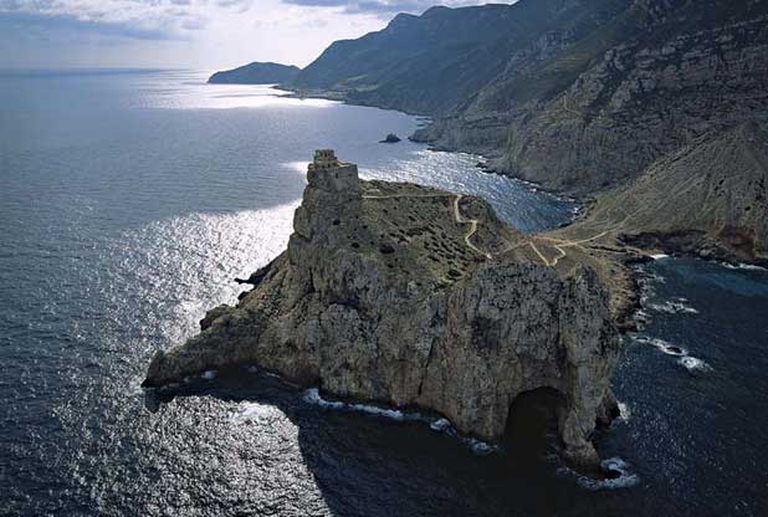
Siamo anche su WhatsApp. Segui il canale ufficiale LifeGate per restare aggiornata, aggiornato sulle ultime notizie e sulle nostre attività.
![]()
Quest'opera è distribuita con Licenza Creative Commons Attribuzione - Non commerciale - Non opere derivate 4.0 Internazionale.
Niseko, Toya-Usu and Shiraoi are three Hokkaido destinations for travellers who want to feel close to the communities they’re visiting.
Disabled travellers need not fear Japan. Accessible Japan founder Josh Grisdale tells us about his commitment to opening the country’s doors to everyone.
Antarctica is becoming more accessible, so much so that tourism has seen a 53 per cent increase in the last four years. And climate change is on of the reasons people visit the frozen continent.
Alpinism has officially been added to the UNESCO Intangible Cultural Heritage (ICH) list. Its candidacy had been jointly submitted by France, Italy and Switzerland.
The word biodiversity recalls lush forests inhabited by countless animal and plant species. Life, thanks to its blind determination, blossoms in a myriad of stunning environments: from deserts and volcanoes to mountains covered up by perennial ice. The most extreme and inhospitable ecosystems can host animals and plants that adapted in the name of survival.
Not just skyscrapers: the Japanese capital is a much greener city that most people imagine. Let’s discover the best Tokyo parks and gardens from autumn to spring, and anytime in between.
Vienna will amaze you with the magnificence of its past and modernity of its services. A tour among the best sights of an environmentally-friendly city with award-winning quality of life standards.
Chile has unveiled the Patagonian Route of Parks, an incredible trail that connects 17 national parks with the aim of promoting nature conservation and community development.
Trekkers throughout the Himalayas have contributed to creating the highest garbage dump in the world. Sustainable tourism in Nepal is still absent, but sorely needed.







